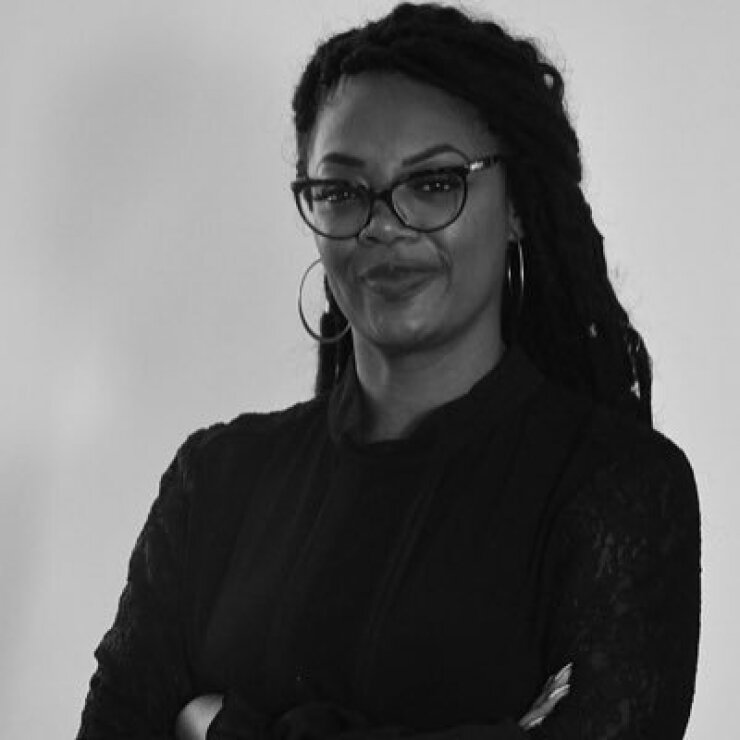For Black Americans and employees from diverse backgrounds, an incessant hurdle toward career success and workplace well-being are the subtle digs or putdowns that many workers still endure.
So-called microaggressions are characterized as
Read more:
“I’ve been labeled an angry Black woman my entire career,” says TaChelle Lawson, founder and CEO of Fig, a brand strategy firm. Lawson says her personality traits are often perceived differently from her white male counterparts in the workplace — and her career may have suffered as a consequence.

“I'm very direct. I’m non-emotional, especially in the workplace, and most of my white male bosses have had the same characteristics,” she says. “They're not asking me how my weekend was when they ask me for the sales numbers. But when I do it: ‘Techelle is cold, and she’s mean and she’s aggressive. She doesn’t care. She’s not a team player.’”
According to Gallup, Black adults are more susceptible to microaggressions than other groups. Thirty-two percent of Black adults say that people have acted as if they were “better than you,” compared to just 4% of white people. Twenty-five percent of Black adults say people have acted as if they were “not smart” and 18% felt people acted as though they were afraid of them because of their skin color.
Awareness and sensitivity around racial discrimination and the treatment of Black people in America has been in the national spotlight for months, after the killing of George Floyd sparked global protests and calls for systemic change.
Read more:
But those conversations often only deal with the big picture, says Sabrina Williams, chief inclusion officer of education technology company Curriculum Associates.

“We can't
While it’s critical to address issues of overt racisim and discrimination in the workplace and work to change them, microaggressions are often unaddressed or ignored, Williams says.
“The microaggressions that happen with BIPOC employees are so subtle and systemic that I think we have to be very intentional about creating a space where those issues can be surfaced and addressed,” Williams says, referring to employees who are Black, Indigenous or People of Color. “One way we can help employees is to give them the tools and language to help them speak from a place of empathy while acknowledging racism.”
During Lawson’s career, she’s seen how the “angry Black woman” stereotype has silenced employees and prevented them from excelling professionally.
“There’s tension at work because I can’t be myself here. If I speak up, I’m going to be labeled,” she says. “It also creates isolation because now I don’t want to share my ideas, and that affects productivity. How can I feel comfortable sharing and staying focused if I’m constantly worried about needing to defend myself?”
Microaggressions negatively impact job satisfaction of diverse employees. Almost 60% of minority employees say they feel “on guard” to deal with potential bias or discrimination at work, according to a report by Catalyst, a nonprofit that creates equitable workplaces.
Read more:
Without the ability of employees to bring their authentic selves to work, everyone suffers, says Hattie Hill, CEO of the T.D. Jakes Foundation, an organization that promotes workplace diversity and inclusion. The Center for Talent Innovation found that 40% of Black employees feel like outsiders in their company culture, compared to 26% of white employees. It’s crucial all employees are offered a seat at the table to move toward a more inclusive workplace, Hill says.

“People want to feel comfortable and engaged at work, and when they feel those things, they’re a lot more productive and that drives business results,” Hill says. “If companies want to have an inclusive workplace, it's those authentic voices that can help you do that. Have a diversity and inclusion council of employees and senior executives that really looks at the challenges people of color face. Then we can create some goals that we know we can accomplish to create a culture with a welcoming work environment.”
Making race a constant topic of conversation is an important part of illuminating how pervasive microaggressions in the workplace can be. White employees can become more aware of how their indirect actions and words have an impact on employees’ experiences, says Williams.
“When microaggressions happen, how do we create the organizational space for those issues to be addressed, so it’snot BIPOC employees being asked to point it out,” Williams says. “Define the behaviors by training people, and then hold people accountable. Employees are looking for structure because they want to feel safe and know that those things will be addressed.”
Lawson says corporate culture must be welcoming to a diversity of ideas, and set the tone for the rest of their workplace. As CEO, she says she “demands diversity” by building a team of people who feel safe being who they truly are.
“If someone feels comfortable labeling someone for their color, that’s a problem with the culture. Dismantle that from the top and make it clear this isn’t acceptable,” she says. “We need to rethink company culture as being about what employees bring to the table. I demand diversity by demanding that my employees be who they are.”






